Alessandro Birolini
Reliability
Engineering
Theory and Practice
Seventh Edition
�
Reliability Engineering
�
Alessandro Birolini
Reliability Engineering
Theory and Practice
Seventh Edition
With 190 Figures, 60 Tables, 140 Examples,
and 70 Problems for Homework
123
�
Prof. Dr. Alessandro Birolini*
Centro Storico—Bargello
I-50122 Firenze
Tuscany, Italy
birolini@emeritus.ethz.ch
www.ethz.ch/people/whoiswho,
www.birolini.ch
*Ingénieur et penseur, Ph.D., Professor Emeritus of Reliability Eng.
at the Swiss Federal Institute of Technology (ETH), Zurich
ISBN 978-3-642-39534-5
DOI 10.1007/978-3-642-39535-2
Springer Heidelberg New York Dordrecht London
ISBN 978-3-642-39535-2
(eBook)
Library of Congress Control Number: 2013945800
Ó Springer-Verlag Berlin Heidelberg 1994, 1997, 1999, 2004, 2007, 2010, 2014
This work is subject to copyright. All rights are reserved by the Publisher, whether the whole or part of
the material is concerned, specifically the rights of translation, reprinting, reuse of illustrations,
recitation, broadcasting, reproduction on microfilms or in any other physical way, and transmission or
information storage and retrieval, electronic adaptation, computer software, or by similar or dissimilar
methodology now known or hereafter developed. Exempted from this legal reservation are brief
excerpts in connection with reviews or scholarly analysis or material supplied specifically for the
purpose of being entered and executed on a computer system, for exclusive use by the purchaser of the
work. Duplication of this publication or parts thereof is permitted only under the provisions of
the Copyright Law of the Publisher’s location, in its current version, and permission for use must
always be obtained from Springer. Permissions for use may be obtained through RightsLink at the
Copyright Clearance Center. Violations are liable to prosecution under the respective Copyright Law.
The use of general descriptive names, registered names, trademarks, service marks, etc. in this
publication does not imply, even in the absence of a specific statement, that such names are exempt
from the relevant protective laws and regulations and therefore free for general use.
While the advice and information in this book are believed to be true and accurate at the date of
publication, neither the authors nor the editors nor the publisher can accept any legal responsibility for
any errors or omissions that may be made. The publisher makes no warranty, express or implied, with
respect to the material contained herein.
Printed on acid-free paper
Springer is part of Springer Science+Business Media (www.springer.com)
�
"La chance vient à l'esprit qui est prêt à la recevoir." 1)
Louis Pasteur
"Quand on aperçoit combien la somme de nos
"ignorances dépasse celle de nos connaissances,
"on se sent peu porté à conclure trop vite." 2)
Louis De Broglie
"One has to learn to consider causes rather than
"symptoms of undesirable events and avoid hypo-
"critical attitudes."
Alessandro Birolini
1) "Opportunity comes to the intellect which is ready to receive it."
2) "When one recognizes how much the sum of our ignorance
2) "exceeds that of our knowledge, one is less ready to draw rapid
2) "conclusions."
�
Preface to the 7 th Edition
The large interest granted to the 6th edition (over 2000 on-line requests per year) incited me for a 7th
and last edition of this book (11 editions with the 4 German editions 1985 - 97).
The book shows how to build in, evaluate, and demonstrate reliability, maintainability, and
availability of components, equipment, and systems. It presents the state-of-the-art of reliability
engineering, both in theory and practice, and is based on the author's more than 30 years experience
in this field, half in industry (part of which in setting up the Swiss Test. Lab. for VLSI, 1979 - 83 in
Neuchâtel) and half as Professor of Reliability Engineering at the Swiss Federal Institute of Technology
(ETH), Zurich. Considering that performance, dependability, cost, and time to market are key factors
for today's products and services, but also that failure of complex systems can have major safety
consequences, reliability engineering becomes a necessary support in developing and producing
complex equipment and systems.
The structure of the book has been conserved through all editions, with main Chapters 1 to 8 and
Appendices A1 to A11 (A10 & A11 since the 5th Edition 2007). Chapters 2, 4, and 6 deal carefully
with analytical investigations, Chapter 5 with design guidelines, Chapters 3 and 7 with tests,
and Chapter 8 with activities during production. Appendix A1 defines and comment on the terms
commonly used in reliability engineering. Appendices A2 - A5 have been added to support managers in
answering the question of how to specify and achieve high reliability (RAMS) targets for complex
equipment and systems. Appendices A6 - A8 are a compendium of probability theory, stochastic
processes, and mathematical statistics, as necessary for Chapters 2, 4, 6, and 7, consistent from a
mathematical point of view but still with reliability engineering applications in mind (demonstration of
established theorems is referred, and for all other propositions or equations, sufficient details for
complete demonstration are given). Appendix A9 includes statistical tables, Laplace transforms, and
probability charts. Appendix A10 resumes basic technological component's properties, and Appendix
A11 gives a set of 70 problems for homework.
This structure makes the book self contained as a text book for postgraduate students or courses in
industry (Fig. 1.9 on p. 24), allows a rapid access to practical results (as a desktop reference), and offers
to theoretically oriented readers all mathematical tools to continue research in this field.
The book covers many aspects of reliability engineering using a common language, and has been
improved step by step. Methods & tools are given in a way that they can be tailored to cover different
reliability requirement levels, and be used for safety analysis too. A large number of tables (60),
figures (190), and examples (210 of which 70 as problems for homework), as well as comprehensive
reference list and index, amply support the text. This last edition reviews, refines, and extends all
previous editions. New in particular includes:
• A strategy to mitigate incomplete coverage (p. 255), yielding new models (Table 6.12 c & d, p. 256).
• A comprehensive introduction to human reliability with a set of design guidelines to avoid human
errors (pp. 158-159) and new models combining human errors probability and time to accomplish a
task, based on semi-Markov processes (pp. 294-298).
• An improvement of the design guidelines for maintainability (pp. 154-158).
• An improvement of reliability allocation using Lagrange multiplier to consider cost aspects (p. 67).
• A comparison of four repair strategies (Table 4.4, p. 141).
• A comparison of basic models for imperfect switching (Table 6.11, p. 248).
• A refinement of approximate expressions, of concepts related to regenerative processes, and of the
use and limitations of stochastic processes in modeling reliability problems (e.g. Table 6.1, p. 171).
• New is also that relevant statements and rules have been written cursive and centered on the text.
Furthermore,
• Particular importance has been given to the selection of design guidelines and rules, the devel-
opment of approximate expressions for large series-parallel systems, the careful simplification of
exact results to allow in-depth trade off studies, and the investigation of systems with complex
structure (preventive maintenance, imperfect switching, incomplete coverage, elements with more
than one failure mode, fault tolerant reconfigurable systems, common cause failures).
VII
�
VIII
• The central role of software quality assurance for complex equipment and systems is highlighted.
• The use of interarrival times starting by x = 0 at each occurrence of the event considered, instead of
the variable t, giving a sense to MTBF and allowing the introduction of a failure rate λ( )x and a
mean time to failure MTTF also for repairable systems, is carefully discussed (pp. 5-6, 41, 175,
316, 341, 378, 380) and consequently applied. Similar is for the basic difference between failure
rate, (probability) density, and renewal density or intensity of a point process (pp. 7, 378, 426, 466,
524). In this context, the assumption as-good-as-new after repair is critically discussed wherever
necessary, and the historical distinction between nonrepairable and repairable items is scaled down
(removed for reliability function, failure rate, MTTF, and MTBF); national and international
standards should better consider this fact and avoid definitions intrinsically valid only for constant
(time independent) failure rates.
,
• Also valid is the introduction since the 1st edition of indices S i for reliability figures at system level
MTTFSi) where S stands for system and i is the state entered at t = 0 (system referring to the
(e. g.
highest integration level of the item considered, and t = 0 being the beginning of observations, x = 0
for interarrival times). This is mandatory for judicious investigations at the system level.
• In agreement with the practical applications, MTBF is reserved for MTBF = 1 / λ.
• Important prerequisites for accelerated tests are carefully discussed (pp. 329-334), in particular to
transfer an acceleration factor A from the MTTF (
to the (random) failure-
free time τ (
• Asymptotic & steady-state is used for stationary, by assuming irreducible embedded chains; repair
for restoration, by neglecting administrative, logistical, technical delays; mean for expected value.
For reliability applications, pairwise independence assures, in general, totally (mutually, statisti-
cally, stochastically) independence, independent is thus used for totally independent.
MTTF
2
MTTF
=
A1
.
)
.
= A
τ
.
τ
1
2
)
The book has growth from about 400 to 600 pages, with main improvements in the 4th to 7th Editions.
• 4th Edition: Complete review and general refinements.
• 5th Edition:
Introduction to phased-mission systems, common cause failures, Petri nets, dynamic
FTA, nonhomogeneous Poisson processes, and trend tests; problems for homework.
• 6th Edition: Proof of Eqs. (6.88) & (6.94), introduction to network reliability, event trees & binary
decision diagrams, extensions of maintenance strategies and incomplete coverage,
refinements for large complex systems and approximate expressions.
The launching of the 6th Edition of this book coincided with my 70th anniversary, this was
celebrated with a special Session at the 12th Int. Conf. on Quality and Dependability CCF2010 held in
Sinaia (RO), 22-24 September 2010. My response to the last question at the interview [1.0] given to
Prof. Dr. Ioan C. Bacivarov, Chairman of the International Scientific Committee of CCF2010, can help
to explain the acceptance of this book:
" Besides more than 15 years experience in the industry, and a predisposition to be a self-taught
man, my attitude to life was surely an important key for the success of my book. This is best
expressed in the three sentences given on the first page of this book. These sentences, insisting
on generosity, modesty and responsibility apply quite general to a wide class of situations and
people, from engineers to politicians, and it is to hope that the third sentence, in particular, will
be considered by a growing number of humans, now, in front of the ecological problems we are
faced and in front of the necessity to create a federal world wide confederation of democratic
states in which freedom is primarily respect for the other ."
The comments of many friends and the agreeable cooperation with Springer-Verlag are gratefully
acknowledged. Looking back to all editions (1st German 1985), thanks are due, in particular, to K.P.
LaSala for reviewing the 4th & 6th Editions [1.17], I.C. Bacivarov for reviewing the 6th Edition [1.0],
book reviewers of the German editions, P. Franken and I. Kovalenko for commenting Appendices A6 -
A8, A. Bobbio F. Bonzanigo, M. Held for supporting numerical evaluations, J. Thalhammer for
supporting the edition of all figures, and L. Lambert for reading final manuscripts.
Zurich and Florence, September 13, 2013
Alessandro Birolini
�
Contents
2.1
2.2
1 Basic Concepts, Quality & Reliability (RAMS) Assurance of Complex Equip. & Systems . . 1
1.1
Introduction . . . . . . . . . . . . . . . . . . . . . . . . . . . . . . . 1
1.2 Basic Concepts . . . . . . . . . . . . . . . . . . . . . . . . . . . . . . 2
1.2.1 Reliability . . . . . . . . . . . . . . . . . . . . . . . . . . . . . 2
1.2.2 Failure . . . . . . . . . . . . . . . . . . . . . . . . . . . . . . 3
1.2.3 Failure Rate, MTTF, MTBF . . . . . . . . . . . . . . . . . . . . . . 4
1.2.4 Maintenance, Maintainability . . . . . . . . . . . . . . . . . . . . . 8
1.2.5 Logistic Support
. . . . . . . . . . . . . . . . . . . . . . . . . . 8
1.2.6 Availability . . . . . . . . . . . . . . . . . . . . . . . . . . . . 9
1.2.7 Safety, Risk, and Risk Acceptance . . . . . . . . . . . . . . . . . . . 9
1.2.8 Quality. . . . . . . . . . . . . . . . . . . . . . . . . . . . . . 11
1.2.9 Cost and System Effectiveness. . . . . . . . . . . . . . . . . . . . 11
1.2.10 Product Liability . . . . . . . . . . . . . . . . . . . . . . . . . . 15
1.2.11 Historical Development . . . . . . . . . . . . . . . . . . . . . . . 16
1.3 Basic Tasks & Rules for Quality & Rel. (RAMS) Assurance of Complex Eq. & Systems . 17
1.3.1 Quality and Reliability (RAMS) Assurance Tasks . . . . . . . . . . . . . 17
1.3.2 Basic Quality and Reliability (RAMS) Assurance Rules . . . . . . . . . . . 19
1.3.3 Elements of a Quality Assurance System. . . . . . . . . . . . . . . . . . 21
1.3.4 Motivation and Training . . . . . . . . . . . . . . . . . . . . . . . 24
2 Reliability Analysis During the Design Phase (Nonrepairable Elements up to System Failure) . . 25
Introduction . . . . . . . . . . . . . . . . . . . . . . . . . . . . . . . 25
Predicted Reliability of Equipment and Systems with Simple Structure .
. . . . . . 28
2.2.1 Required Function . . . . . . . . . . . . . . . . . . . . . . . . . 28
2.2.2 Reliability Block Diagram . . . . . . . . . . . . . . . . . . . . . . 28
2.2.3 Operating Conditions at Component Level, Stress Factors
. . . . . . . . . 33
2.2.4 Failure Rate of Electronic Components . . . . . . . . . . . . . . . . . 35
2.2.5 Reliability of One-Item Structures . . . . . . . . . . . . . . . . . . . 39
2.2.6 Reliability of Series-Parallel Structures . . . . . . . . . . . . . . . . . 41
2.2.6.1 Systems without Redundancy . . . . . . . . . . . . . . . . . 41
2.2.6.2 Concept of Redundancy . . . . . . . . . . . . . . . . . . . 42
2.2.6.3 Parallel Models
. . . . . . . . . . . . . . . . . . . . . . 43
2.2.6.4 Series - Parallel Structures
. . . . . . . . . . . . . . . . . . 45
2.2.6.5 Majority Redundancy . . . . . . . . . . . . . . . . . . . . 49
2.2.7 Part Count Method . . . . . . . . . . . . . . . . . . . . . . . . . 51
2.3 Reliability of Systems with Complex Structure . . . . . . . . . . . . . . . . . 52
2.3.1 Key Item Method . . . . . . . . . . . . . . . . . . . . . . . . . 52
2.3.1.1 Bridge Structure . . . . . . . . . . . . . . . . . . . . . . 53
2.3.1.2 Rel. Block Diagram in which Elements Appear More than Once . . . 54
2.3.2 Successful Path Method . . . . . . . . . . . . . . . . . . . . . . . 55
2.3.3 State Space Method
. . . . . . . . . . . . . . . . . . . . . . . . 56
2.3.4 Boolean Function Method . . . . . . . . . . . . . . . . . . . . . . 57
2.3.5 Parallel Models with Constant Failure Rates and Load Sharing . . . . . . . 61
2.3.6 Elements with more than one Failure Mechanism or one Failure Mode
. . . . 64
2.3.7 Basic Considerations on Fault Tolerant Structures . . . . . . . . . . . . 66
2.4 Reliability Allocation and Optimization . . . . . . . . . . . . . . . . . . . 67
IX
�
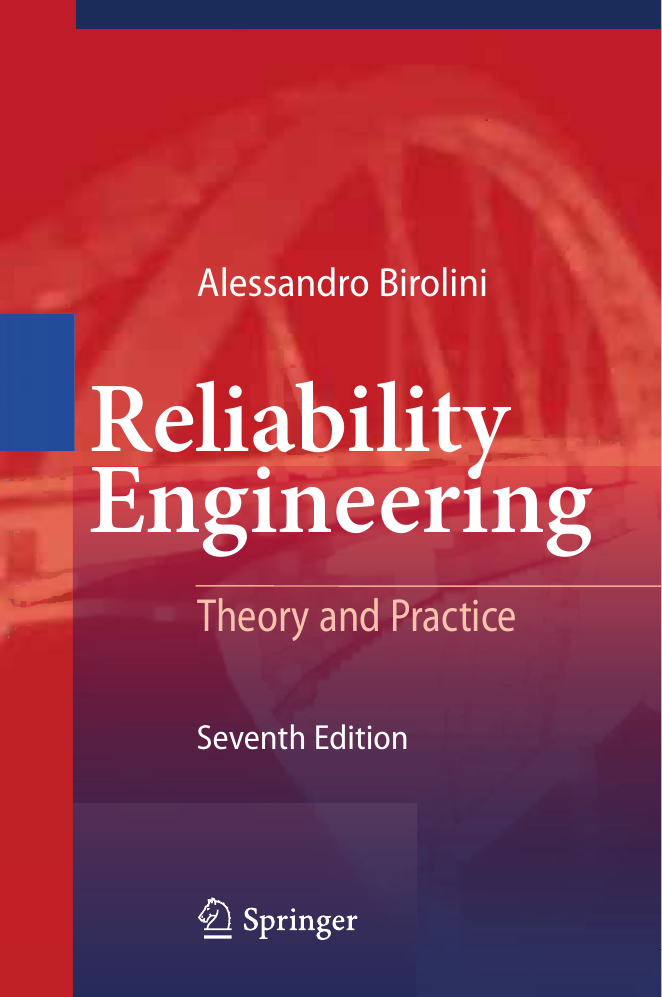
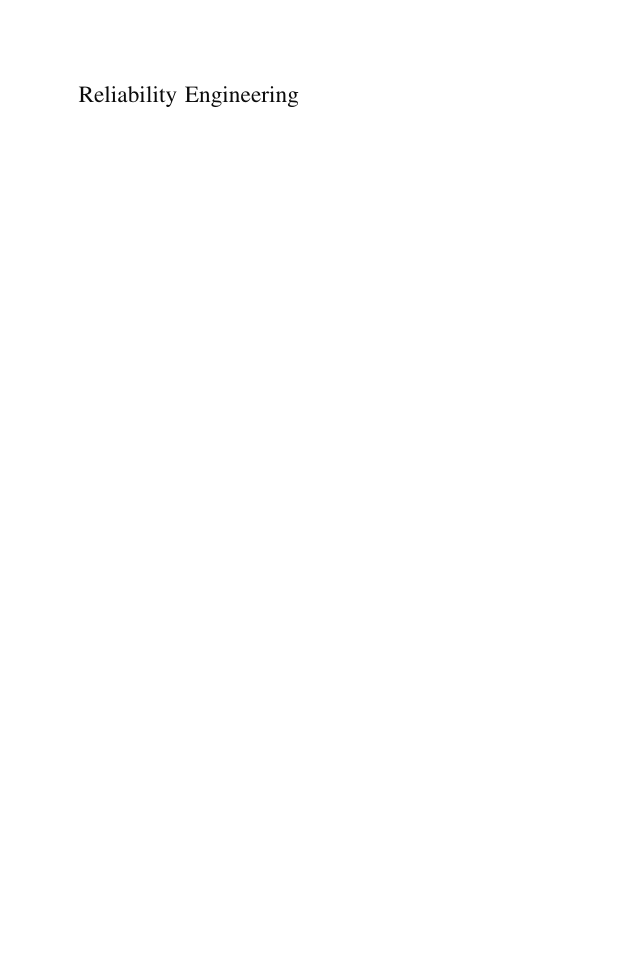
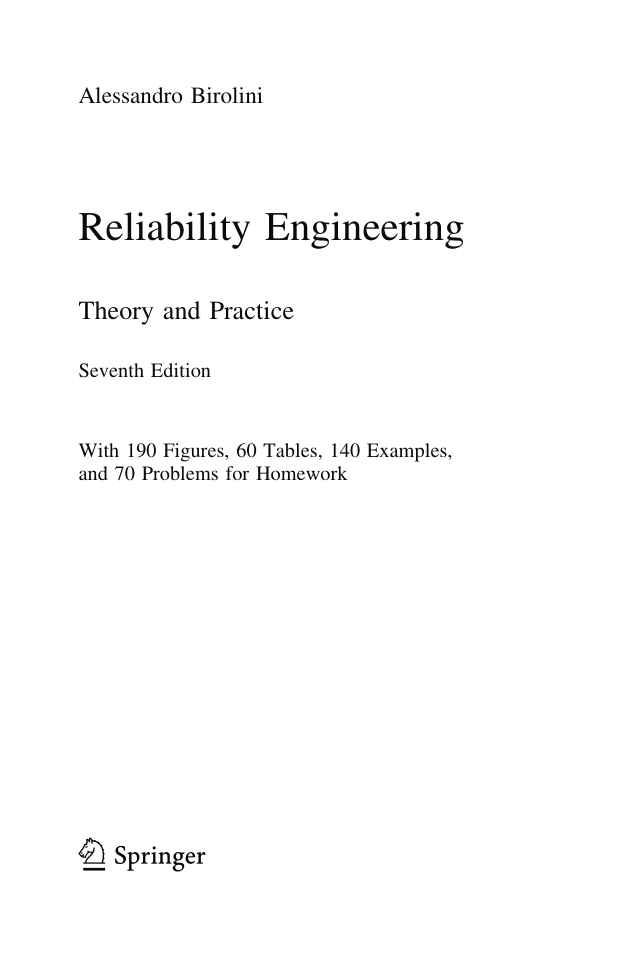

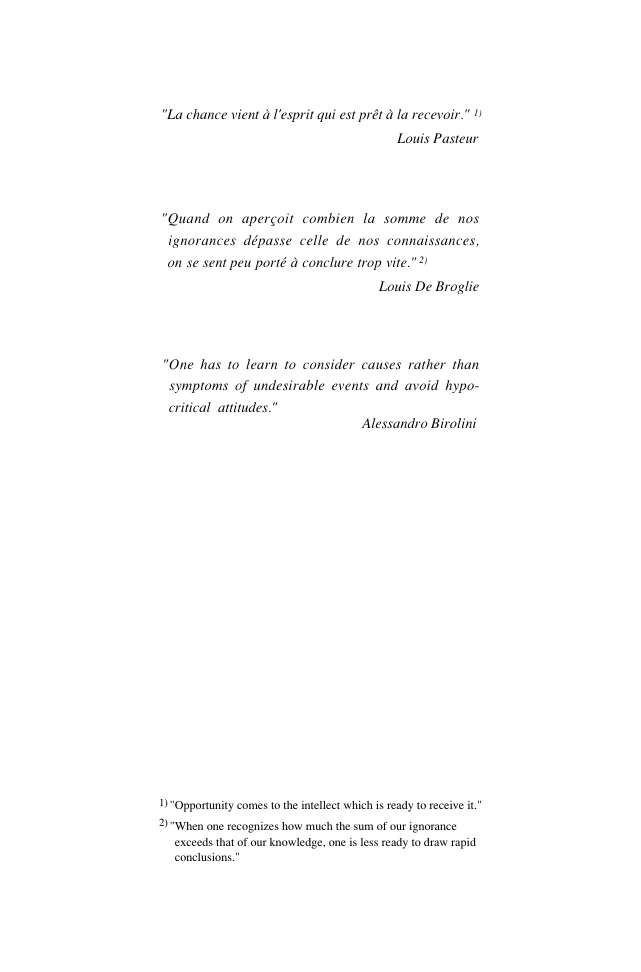
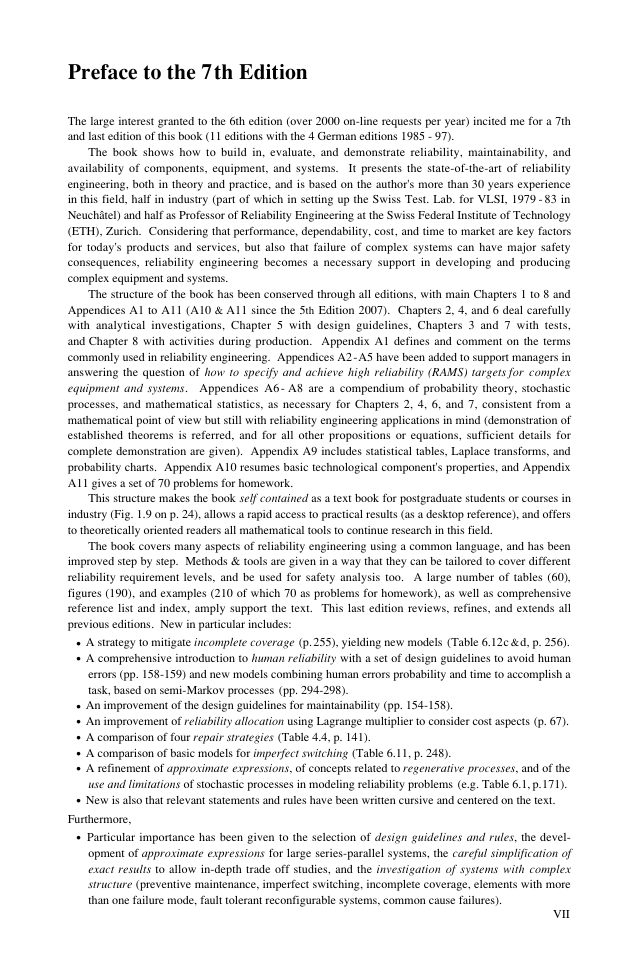
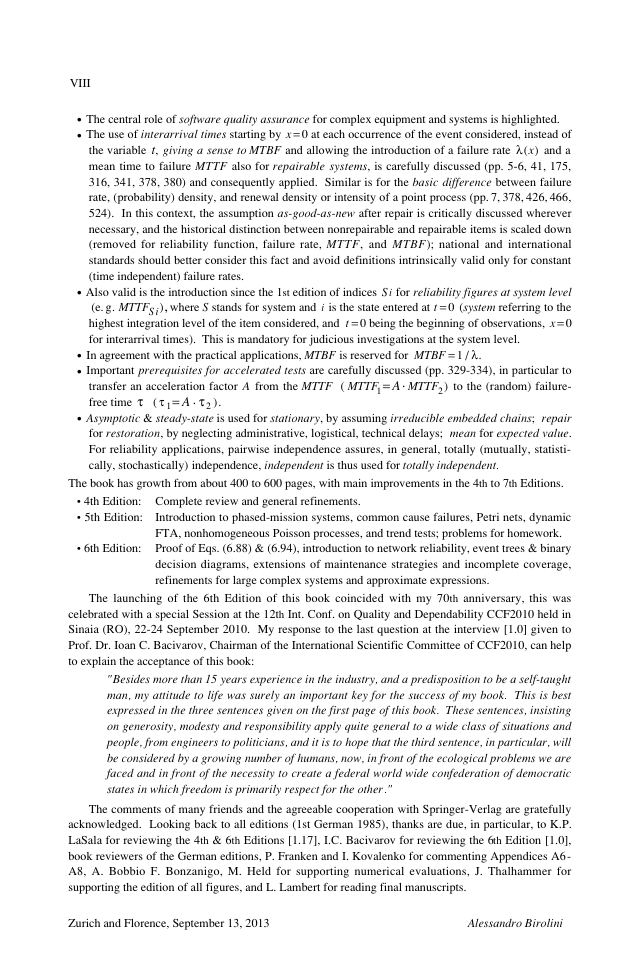
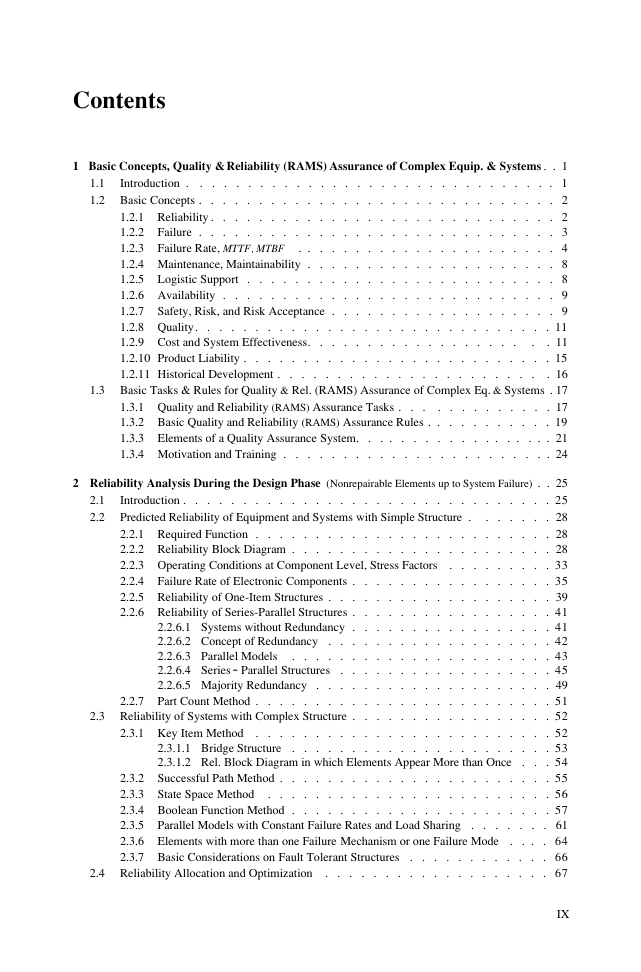








 2023年江西萍乡中考道德与法治真题及答案.doc
2023年江西萍乡中考道德与法治真题及答案.doc 2012年重庆南川中考生物真题及答案.doc
2012年重庆南川中考生物真题及答案.doc 2013年江西师范大学地理学综合及文艺理论基础考研真题.doc
2013年江西师范大学地理学综合及文艺理论基础考研真题.doc 2020年四川甘孜小升初语文真题及答案I卷.doc
2020年四川甘孜小升初语文真题及答案I卷.doc 2020年注册岩土工程师专业基础考试真题及答案.doc
2020年注册岩土工程师专业基础考试真题及答案.doc 2023-2024学年福建省厦门市九年级上学期数学月考试题及答案.doc
2023-2024学年福建省厦门市九年级上学期数学月考试题及答案.doc 2021-2022学年辽宁省沈阳市大东区九年级上学期语文期末试题及答案.doc
2021-2022学年辽宁省沈阳市大东区九年级上学期语文期末试题及答案.doc 2022-2023学年北京东城区初三第一学期物理期末试卷及答案.doc
2022-2023学年北京东城区初三第一学期物理期末试卷及答案.doc 2018上半年江西教师资格初中地理学科知识与教学能力真题及答案.doc
2018上半年江西教师资格初中地理学科知识与教学能力真题及答案.doc 2012年河北国家公务员申论考试真题及答案-省级.doc
2012年河北国家公务员申论考试真题及答案-省级.doc 2020-2021学年江苏省扬州市江都区邵樊片九年级上学期数学第一次质量检测试题及答案.doc
2020-2021学年江苏省扬州市江都区邵樊片九年级上学期数学第一次质量检测试题及答案.doc 2022下半年黑龙江教师资格证中学综合素质真题及答案.doc
2022下半年黑龙江教师资格证中学综合素质真题及答案.doc